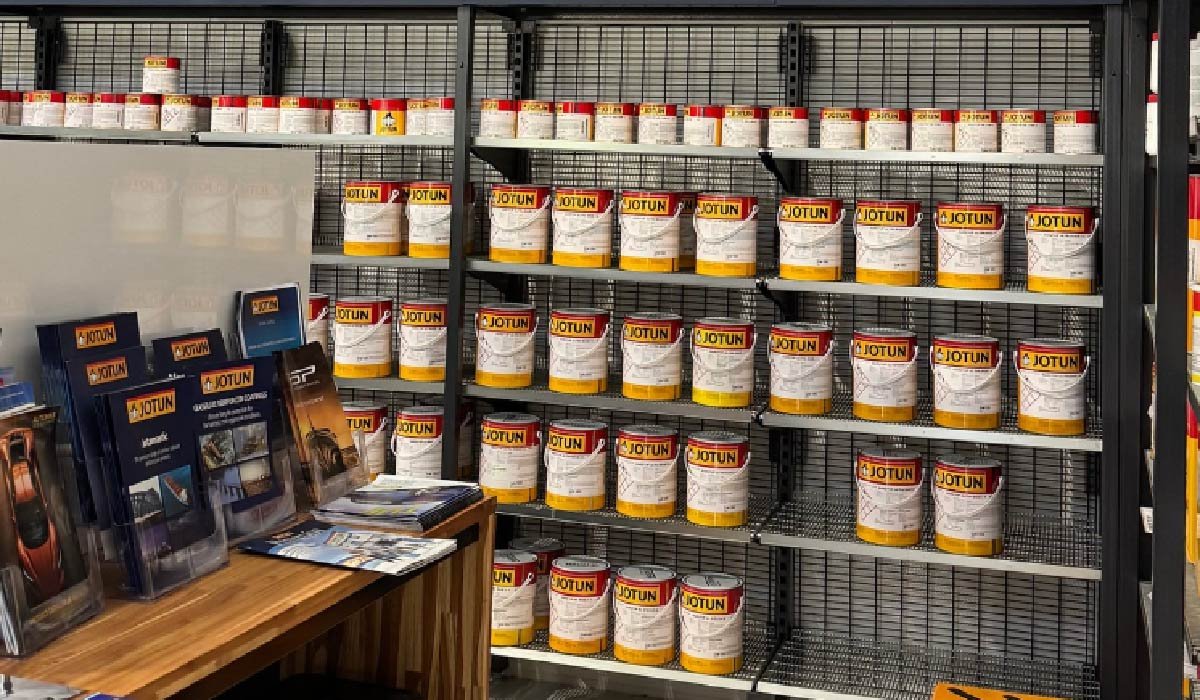Business
Protecting Your Fleet: Essential Marine Coating Solutions for Australian Waters

Introduction
Australia’s vast coastline and thriving maritime industry present unique challenges for vessel owners. From commercial fishing boats to cargo ships and private yachts, all marine operators face the persistent issue of biofouling — the unwanted accumulation of marine organisms such as algae, barnacles, and mussels on hulls and submerged structures. Beyond being an aesthetic problem, biofouling increases drag, reduces fuel efficiency, and accelerates corrosion, all of which significantly increase operational costs.
In addition to performance concerns, vessel owners in Australia must adhere to strict environmental and biosecurity regulations. The Australian Government’s Department of Agriculture, Fisheries and Forestry requires vessels to implement biofouling management measures before entering local waters. As such, maintaining a clean hull is not just a matter of efficiency but also legal compliance. The combination of advanced marine coatings and a well-structured management plan is key to ensuring vessel longevity, performance, and environmental responsibility.
Understanding Biofouling in Australian Waters
Australia’s maritime environment offers ideal conditions for the rapid growth of marine organisms. Warm temperatures, nutrient-rich coastal waters, and diverse marine ecosystems contribute to significant biofouling challenges for vessels operating across regions such as the Great Barrier Reef, Port Phillip Bay, and Sydney Harbour.
When left unchecked, biofouling can reduce a vessel’s speed by up to 10%, increasing fuel consumption by as much as 40%. For commercial shipping and fishing operators, this translates to substantial financial losses. Moreover, heavy fouling can cause damage to hull coatings, propellers, and sea chests, leading to expensive repairs and downtime.
The Australian government enforces strict standards under the Australian Biofouling Management Requirements for International Vessels. These regulations are designed to protect local marine biodiversity by reducing the risk of invasive species transfer. Vessel owners who fail to comply can face fines, inspections, and potential delays in port clearance. Understanding and mitigating biofouling is therefore both an operational necessity and a regulatory requirement.
Industrial Paint Solutions for Long-Term Vessel Protection
To effectively combat biofouling, vessel owners must rely on high-quality marine coatings that are specifically designed to resist the attachment and growth of marine organisms. This is where solutions from an industrial paint shop become indispensable. These specialized coatings act as a protective barrier between the hull and the marine environment, preventing fouling organisms from attaching in the first place.
In Australia, companies such as Seacraft Paints provide a wide range of industrial-grade marine coatings that are engineered for the country’s unique climatic and oceanic conditions. These coatings include antifouling paints containing biocides that deter the settlement of organisms, as well as foul-release coatings that make it easier to remove growth during routine cleaning.
Working with a reputable local industrial paint supplier ensures that the products meet Australian standards and environmental guidelines. Professionals in these paint shops can also advise on the most suitable coating systems for specific vessel types, operating speeds, and maintenance schedules. While some operators may be tempted by cheaper, low-grade coatings, investing in professional-grade products offers better durability, reduced dry-docking frequency, and lower long-term costs.
Choosing the Right Coating System for Australian Conditions
Selecting the appropriate marine coating is not a one-size-fits-all decision. Australian vessels operate in a variety of environments — from the warm tropical waters of Queensland to the cooler southern coasts of Tasmania. Each region poses different biofouling risks and environmental factors that must be considered when choosing the right coating system.
Epoxy-based primers, for example, offer excellent corrosion resistance and are ideal for steel-hulled vessels. Silicone-based foul-release coatings, on the other hand, are more suited for high-speed crafts where smoothness and drag reduction are critical. The performance of these coatings also depends on proper surface preparation, correct application techniques, and regular inspection.
Many Australian suppliers provide full-service solutions that include surface preparation, application supervision, and aftercare support. This ensures that the coating performs to its maximum potential and provides optimal protection throughout the vessel’s operational life. Vessel operators are advised to work closely with certified coating specialists who understand the intricacies of local marine conditions and regulatory requirements.
Implementing an Effective Biofouling Management Plan
Beyond coatings, every vessel operating in Australian waters must have a biofouling management plan in place. This structured approach outlines the preventive and corrective measures needed to control biofouling, ensuring compliance with both international and Australian standards.
An effective biofouling management plan includes several key components: a detailed record of the vessel’s coating systems, regular inspection schedules, cleaning procedures, and maintenance logs. The plan should also specify which areas of the vessel are most susceptible to fouling and outline steps for in-water cleaning or dry-docking as needed.
Professional assessment by marine service providers such as FranMarine helps vessel operators develop customized management plans that align with their operational routes and schedules. Implementing such a plan not only ensures compliance but also significantly extends the lifespan of hull coatings and reduces fuel consumption. By maintaining an updated management record, vessel owners can demonstrate compliance to authorities and avoid costly delays or penalties.
Environmental and Economic Benefits of Biofouling Control
Effective biofouling control goes beyond regulatory compliance and maintenance savings. It plays a crucial role in reducing environmental impact. Biofouling contributes to the spread of invasive aquatic species, which can disrupt native ecosystems and harm fisheries. By using advanced coatings and adhering to proper management practices, vessel owners actively participate in preserving Australia’s marine biodiversity.
Economically, controlling biofouling translates to improved fuel efficiency and reduced greenhouse gas emissions. According to studies by the International Maritime Organization (IMO), biofouling can increase fuel use by up to 20%, depending on the level of fouling. For large fleets, this represents a significant increase in operational expenses. Proper hull maintenance through quality coatings and routine cleaning reduces drag, allowing vessels to operate at peak efficiency and with lower environmental impact.
Furthermore, environmentally compliant coatings and cleaning practices help Australian operators meet global sustainability standards, strengthening their reputation in the international shipping market.
Partnering with Local Experts for Lasting Results
For Australian vessel owners, partnering with local marine coating specialists and service providers offers unmatched advantages. These professionals possess a deep understanding of regional marine conditions, environmental laws, and coating technologies suited to Australian waters.
Local suppliers and contractors also ensure faster service delivery, reduced logistical challenges, and better after-sales support compared to international providers. Many offer customized maintenance programs that include periodic inspections, touch-ups, and recoating schedules tailored to vessel usage patterns.
Working with trusted Australian experts allows operators to benefit from a comprehensive approach — from selecting the right industrial coatings to developing and maintaining a compliant biofouling management plan. This partnership ultimately results in improved vessel efficiency, reduced operating costs, and enhanced environmental responsibility.
Final Thoughts
Biofouling remains a major concern for vessel owners operating in Australian waters. However, with the right combination of advanced marine coatings and structured management practices, it is possible to safeguard vessel performance, meet regulatory obligations, and minimize environmental impact.
Investing in high-quality coatings from reputable Australian industrial paint shop suppliers and implementing a well-documented biofouling management plan ensures long-term protection for both vessels and the marine ecosystem. For Australian operators, the key to success lies in proactive maintenance, expert consultation, and a commitment to sustainability. By taking these measures, vessel owners can confidently navigate Australia’s challenging marine environments while keeping their fleets efficient, compliant, and environmentally responsible.
-

 Celebrity1 year ago
Celebrity1 year agoWho Is Jennifer Rauchet?: All You Need To Know About Pete Hegseth’s Wife
-

 Celebrity1 year ago
Celebrity1 year agoWho Is Mindy Jennings?: All You Need To Know About Ken Jennings Wife
-

 Celebrity1 year ago
Celebrity1 year agoWho Is Enrica Cenzatti?: The Untold Story of Andrea Bocelli’s Ex-Wife
-

 Celebrity1 year ago
Celebrity1 year agoWho Is Klarissa Munz: The Untold Story of Freddie Highmore’s Wife
















